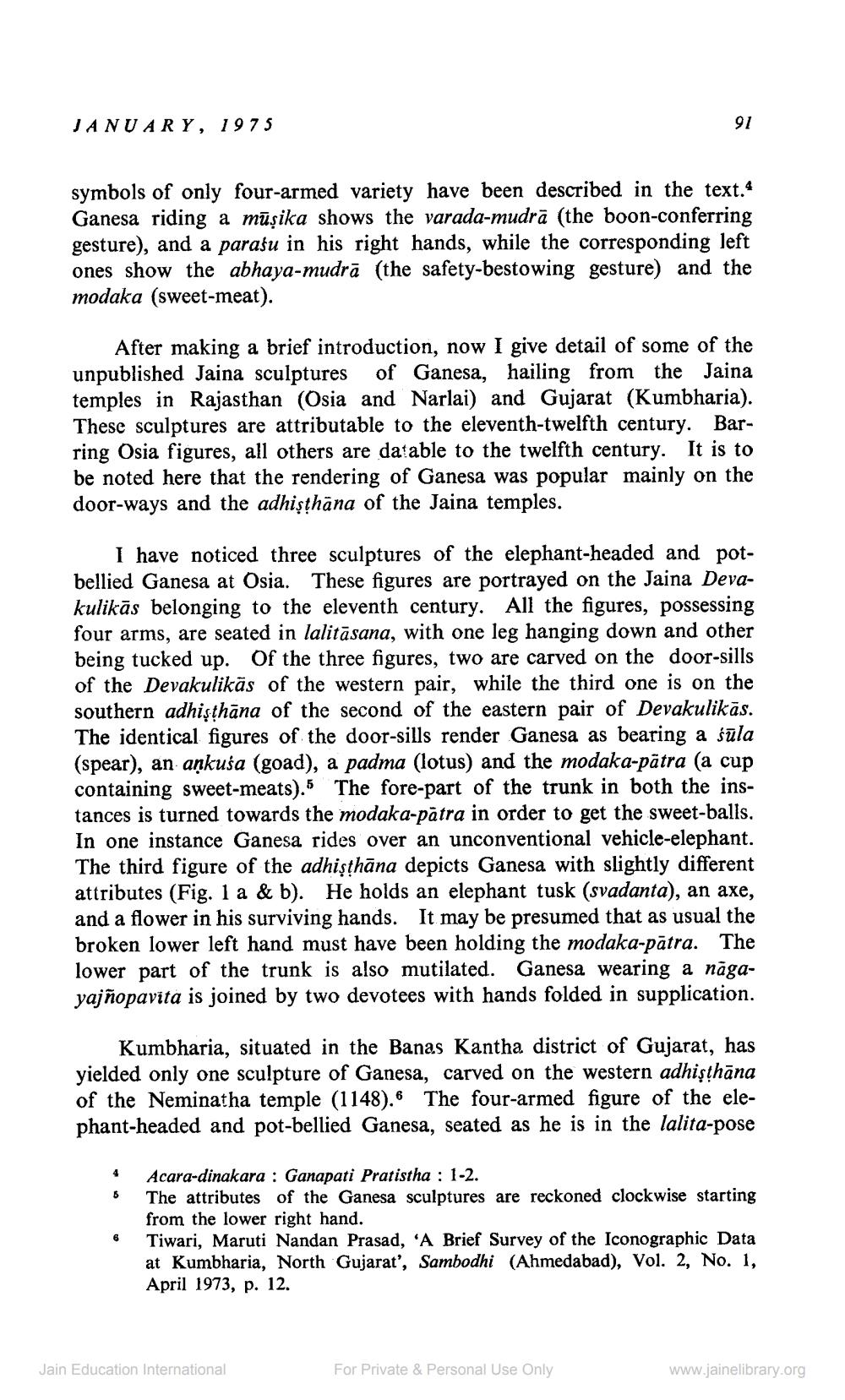________________
JANUARY, 1975
symbols of only four-armed variety have been described in the text.4 Ganesa riding a musika shows the varada-mudrā (the boon-conferring gesture), and a paratu in his right hands, while the corresponding left ones show the abhaya-mudrā (the safety-bestowing gesture) and the modaka (sweet-meat).
After making a brief introduction, now I give detail of some of the unpublished Jaina sculptures of Ganesa, hailing from the Jaina temples in Rajasthan (Osia and Narlai) and Gujarat (Kumbharia). These sculptures are attributable to the eleventh-twelfth century. Barring Osia figures, all others are datable to the twelfth century. It is to be noted here that the rendering of Ganesa was popular mainly on the door-ways and the adhiṣṭhāna of the Jaina temples.
I have noticed three sculptures of the elephant-headed and potbellied Ganesa at Osia. These figures are portrayed on the Jaina Devakulikās belonging to the eleventh century. All the figures, possessing four arms, are seated in lalitasana, with one leg hanging down and other being tucked up. Of the three figures, two are carved on the door-sills of the Devakulikäs of the western pair, while the third one is on the southern adhiṣṭhāna of the second of the eastern pair of Devakulikās. The identical figures of the door-sills render Ganesa as bearing a sula (spear), an ankuśa (goad), a padma (lotus) and the modaka-pātra (a cup containing sweet-meats).5 The fore-part of the trunk in both the instances is turned towards the modaka-patra in order to get the sweet-balls. In one instance Ganesa rides over an unconventional vehicle-elephant. The third figure of the adhiṣṭhāna depicts Ganesa with slightly different attributes (Fig. 1 a & b). He holds an elephant tusk (svadanta), an axe, and a flower in his surviving hands. It may be presumed that as usual the broken lower left hand must have been holding the modaka-patra. The lower part of the trunk is also mutilated. Ganesa wearing a nagayajñopavita is joined by two devotees with hands folded in supplication.
Kumbharia, situated in the Banas Kantha district of Gujarat, has yielded only one sculpture of Ganesa, carved on the western adhiṣṭhāna of the Neminatha temple (1148). The four-armed figure of the elephant-headed and pot-bellied Ganesa, seated as he is in the lalita-pose
4
91
5
6
Acara-dinakara: Ganapati Pratistha: 1-2.
The attributes of the Ganesa sculptures are reckoned clockwise starting from the lower right hand.
Tiwari, Maruti Nandan Prasad, 'A Brief Survey of the Iconographic Data at Kumbharia, North Gujarat', Sambodhi (Ahmedabad), Vol. 2, No. 1, April 1973, p. 12.
Jain Education International
For Private & Personal Use Only
www.jainelibrary.org




